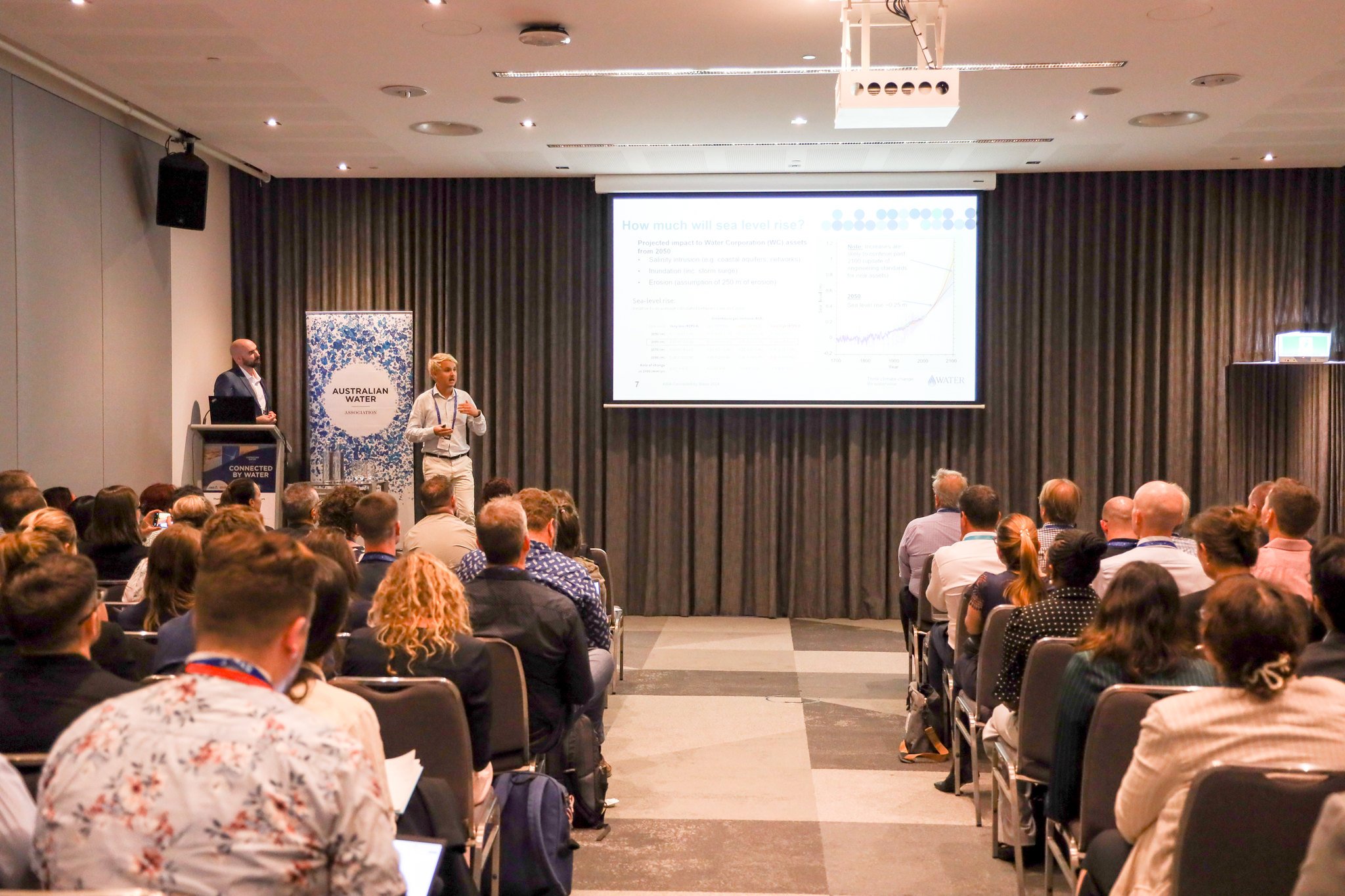Water Corporation’s Approach to Climate Change Risk Management

Water Corporation services 1.3 million homes and businesses. optimising adaptation strategies, especially for climate change risk management, is of critical importance for the safeguarding of their customer base against risks facing water.
“20,000 years ago, the sea level was 140 metres below our present sea level." - Dylan Pritchard boomed to delegates at the Connected by Water conference, outlining the change in sea level with data from Kurt Lambeck of the Australian National University (ANU).
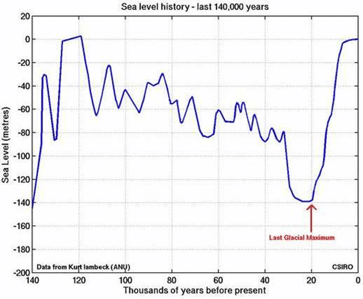
"It is worth acknowledging that the oldest continuous culture in the world has successfully adapted to continuous changes to climate in the past and have an abundance of kartdijin, or knowledge, through their extensive experience of Aboriginal people in land management. This is demonstrated with the shaded line representing the estimated arrival of Aboriginal people to the Australian continent. And since this time you can see changes in sea levels." - Dylan said.
Water Corporation Assets
Water Corporation is an integrated water utility operating across Western Australia. Their purpose is to manage water services sustainably to make WA a great place to live and invest. They have a lot of assets, spread over a very large area, with very different climatic conditions.
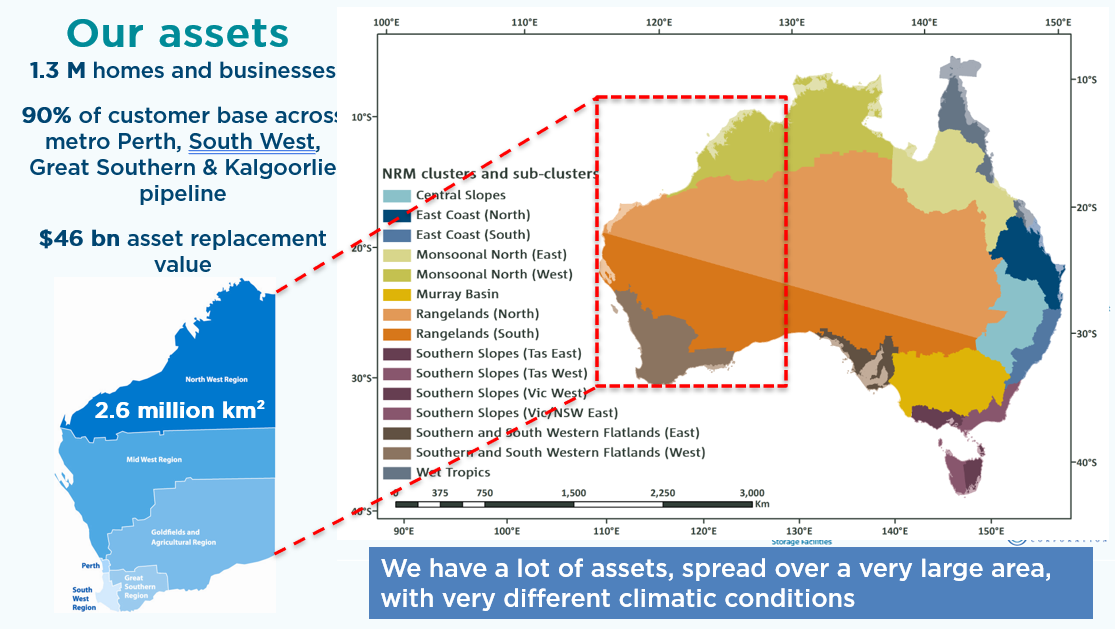
How will climate change impact Western Australia?
The climate is changing, but adapting to this changing climate isn’t new to Water Corp .
A relatively small reduction in average rainfall has resulted in a very large reduction in inflows into their dams. The approach is to achieve source security through diversity in sources, particularly in metro area to date (major base of customers)

This is further demonstrated through their strong proportion of desalinated water compared to other capital cities.
Other climate perils will impact their levels of service including:
- Ingress to sewer network and destruction of assets due to sea level rise
- Flooding risk and increased asset failure from high winds, hail and rain due to more extreme weather events
- Increased source demand and limitation of asset capability due to extreme temperatures and heatwaves
- Impacts to water quality, assets and ability to operate and maintain levels of service due to changes in bushfire behaviour
- Impacts to source security outside of metropolitan area (particularly with the handover of responsibility for Aboriginal Communities' water services)
With all things considered, how do Water Corporation maintain their levels of service?
In Perth, they’ve been adapting to a changing climate since the 1970’s, but they will be impacted in more ways as well as source security concerns. A revitalised overall approach is needed and continuously refined.
The new overall approach
An update of their Asset Management Strategy identified the need to build more resilient systems and services, acknowledging the previous mentioned impacts of climate change into the future.
|
Assessments are targeted at the ‘middle space’
|
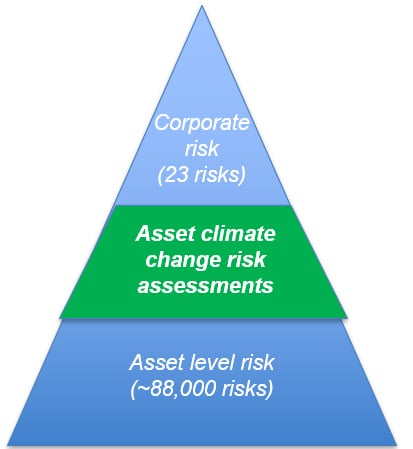 |
Based on the number of assets over the vast geographic spread, they have ~88,000 risk assessments for their assets that are automatically generated on a quarterly time step.
For climate change risk assessments, what future time step, what climate projection and what climate model to use are important. To consider all their assets with these various factors would result in 100,000’s of risk assessments that would require:
- immense support and knowledge uplift for interpretation by our end users, being asset planners and maintenance & reliability users; and
- budget and time to detail these risk assessments would also be extensive.
Screening level assessments across their service chain elements at a district based level would allow Water Corporation to prioritise where they should do these labour and time-intensive process of detailed modelling, saving money on where there is no issue from a particular climate change impact.
Therefore, they proposed a systematic way of grouping similar impacts due to climate change, starting with sea level rise impacts.
Water Corporation need a fit for purpose risk assessment that is targeted at the appropriate level to drive action with the correct level of investment.
A staged approach
Water Corporation identified five phases below with plans to complete all phases by December 2024.
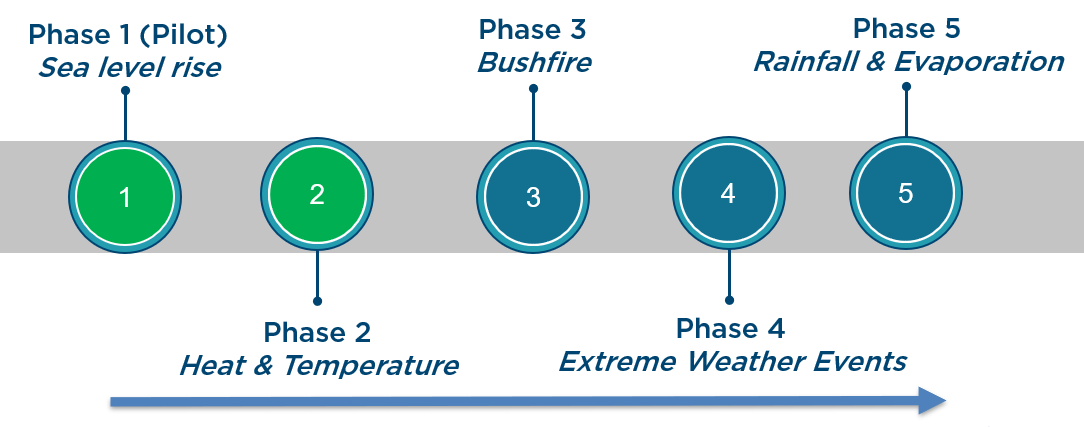
Currently, they have completed Phase 1 (Pilot) Sea level rise and have started planning for Phase 2 Heat and Temperature.
Phase 1 - How much will sea level rise?
The projected impact to Water Corporation assets from 2050 include:
- Salinity intrusion (e.g. coastal aquifers, networks)
- Innundation (including storm surge)
- Erosion (assumption of 250 metres of erosion)
2050 was chosen because it fits well with Water Corporation's planning timeframes and will deal with upgrades/renewals of existing asset base. Analysis against available 2090 information was also used to support an adjacent project of an uplift in their engineering standards, particularly as any new assets should consider impacts out to 2100 and beyond.
Consideration of uncertainty from several data sources below allows refinement of what are the key datasets that will drive decisions.
Sea level rise (relative to an average calculated between 1986 - 2005)
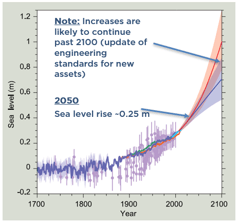
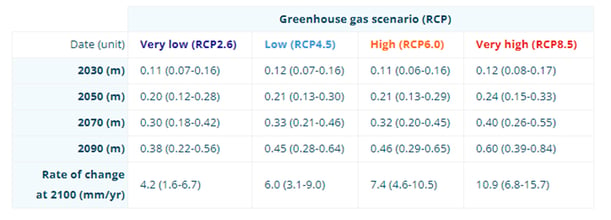
Methodology
To undertake this work, Water Corporation used the below propeller diagram and methodology considered by their regulator.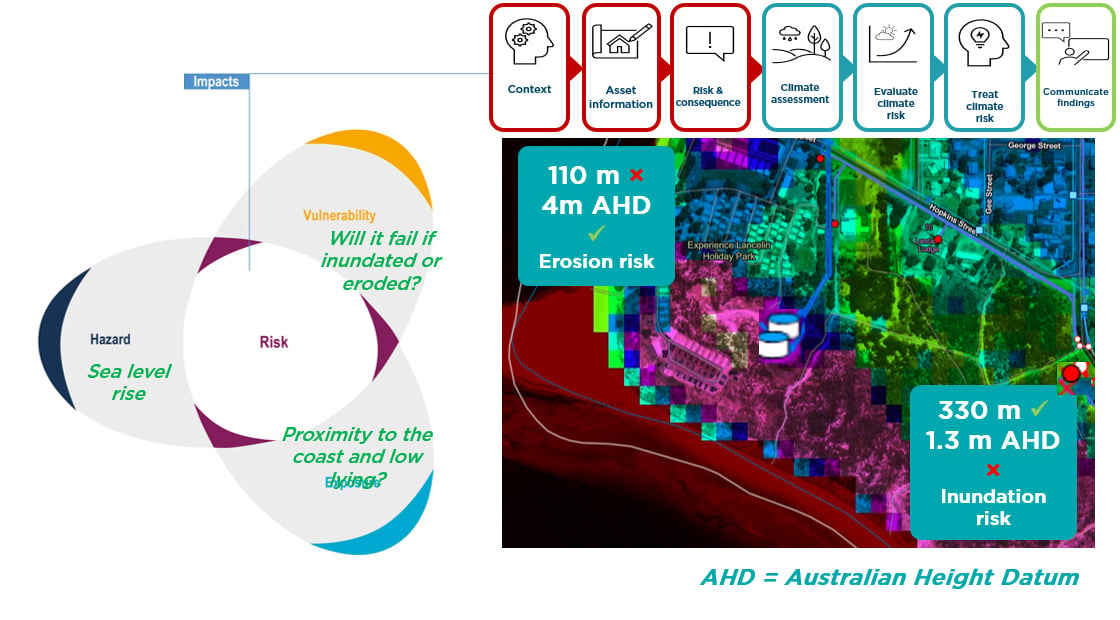
Consideration of the propeller diagram above supports a screening level risk assessment
Results
It's crucial for organisations and individuals to think about a platform to communicate results along the way.
The dashboard below displays the information from the Asset Climate Change Risk Management project, a key initiative undertaken by Asset Strategy Business Unit (ASBU) in FY23/24 as part of the Asset Management Strategy roadmap.
As of January 2024, climate change impacts from sea level rise and coastal processes have been assessed and workshopped. Further information and risk assessments will be made available when completed throughout 2024.

For sea level rise, we can focus efforts to understand priority risks and understand our most impacted asset classes, such as sewerage pump stations or drainage assets.
The basis for qualitative risk assessments at a service chain element level (with focus on most critical and more exposed assets) is as follows:
- ~1/3 of risk assessments no, low or moderate risk = accept and monitor risk (no action required); and
- ~3/4 of projected impacted facilities are sewerage pump stations or drainage scheme
The journey so far
For Water Corporation, they have been able to have a holistic view of assets across the entire State. They've implemented upskilling and communication to allow replicability into the future and avoid rework.
Detailed modelling for risk assessment are still required for complex situations and large financial decision. However, acknowledging data limitations and ensuring transparency will ensure greater understanding of work.
"You'll never have all the information required, make a start and ensure you're collaborating along the way." - Matt Stenhouse.
Find out more on the inaugural Connected by Water conference including photo galleries and recaps.
